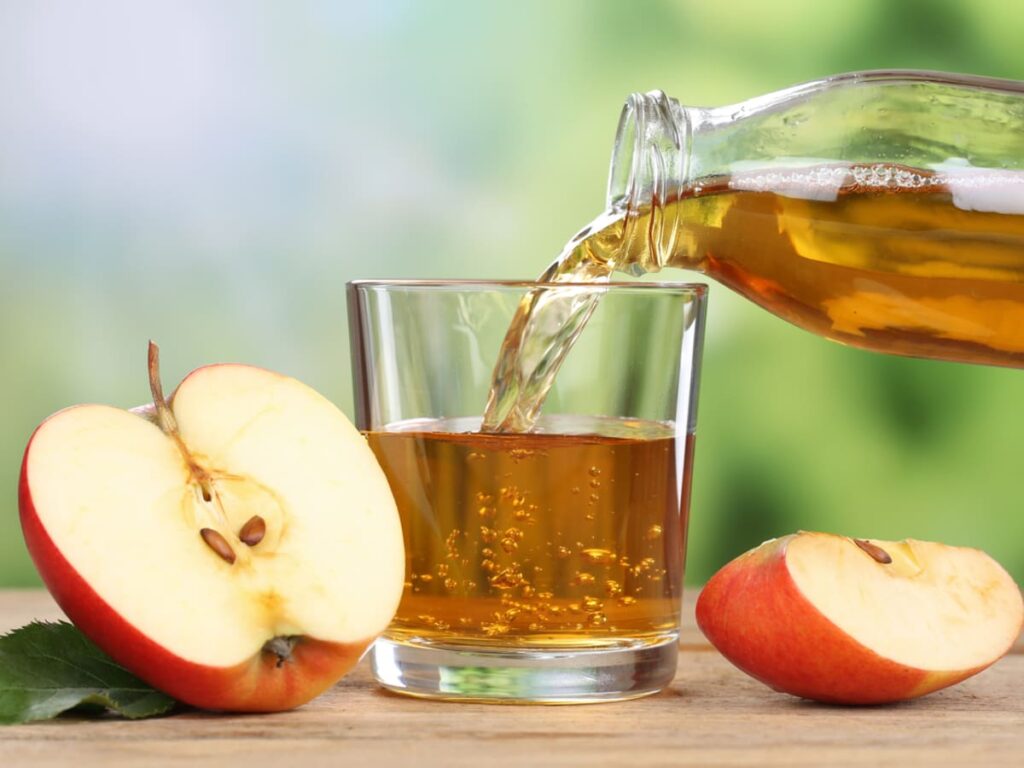
Apples and apple juice may come from the same fruit, but they’re surprisingly different when it comes to health and nutrition. While both are tasty and refreshing, the way they affect your body — from sugar levels to fiber content — can vary a lot. In a world where health-conscious choices matter more than ever, it’s important to know whether biting into a crisp apple or sipping a glass of juice is the better option. So, which one truly supports a healthier lifestyle? Let’s break it down.
Nutritional Overview
Apples and apple juice may seem nutritionally similar — after all, they come from the same source. However, once the fruit is processed into juice, key nutrients like fiber are lost, and the sugar becomes more concentrated. Let’s take a quick look at how they compare side by side:
| Nutrient | Medium Apple (1) | Apple Juice (1 cup / 240ml) |
|---|---|---|
| Calories | ~95 kcal | ~115 kcal |
| Sugar | ~19g (natural sugar) | ~24g (natural & added) |
| Fiber | ~4g | 0g |
| Vitamin C | ~8% DV | ~100% DV (fortified) |
| Water Content | High | Very high |
Apple juice has more sugar and calories, while whole apples give you fiber and better fullness.
Fiber Content
One of the biggest differences between apples and apple juice is fiber. Whole apples are rich in dietary fiber, especially in the skin, which helps with digestion and keeps you feeling full longer. On the other hand, apple juice contains little to no fiber, as most of it is lost during the juicing process. If you’re looking to support gut health or control hunger, the whole apple clearly wins.
| Item | Fiber Content |
|---|---|
| Medium Apple | ~4 grams (mostly in skin) |
| Apple Juice | 0 grams |
Whole apples offer fiber for digestion — juice doesn’t.
Sugar and Calories
While both apples and apple juice contain natural sugars, the way your body processes them is quite different. Apple juice often contains concentrated sugars and sometimes added sugars, which can spike blood sugar levels more quickly. Whole apples, thanks to their fiber, slow down sugar absorption and help maintain steady energy.
| Item | Sugar (approx.) | Calories (approx.) | Sugar Spike Risk |
|---|---|---|---|
| Medium Apple | ~19g (natural) | ~95 kcal | Low (due to fiber) |
| Apple Juice | ~19g (natural) | ~115 kcal | High (no fiber) |
Juice has more sugar and calories — and it hits your bloodstream faster.
Satiety (Feeling Full)
When it comes to feeling full and satisfied, whole apples are much better than apple juice. Thanks to their fiber and chewing time, apples take longer to eat and help control hunger. Apple juice, on the other hand, goes down quickly and doesn’t provide the same sense of fullness — making it easier to overconsume calories without realizing it.
| Item | Fiber Content | Chewing Time | Fullness Effect |
|---|---|---|---|
| Medium Apple | High (~4g) | Long | High (filling) |
| Apple Juice | None | Very Short | Low (not filling) |
Apples keep you full — juice disappears fast and leaves you hungry.
Processing & Additives
Store-bought apple juice often goes through heavy processing, including pasteurization, filtration, and the addition of preservatives or added sugars to improve shelf life and taste. Whole apples are naturally free of such additives. Homemade juice can be a healthier option, but it still lacks the fiber found in whole apples.
| Item | Processing Level | Additives | Natural State |
|---|---|---|---|
| Whole Apple | None | None | Yes |
| Store-Bought Juice | High (pasteurized) | Often added sugar & preservatives | No |
| Homemade Juice | Low to moderate | Usually none | Partially |
Whole apples are pure — juice often comes with extra stuff you didn’t ask for.
Health Benefits
Both apples and apple juice offer some health perks — but the benefits differ based on how they’re consumed.
a. Health Benefits of Apples
Whole apples are rich in fiber, antioxidants, and vitamins that help improve digestion, boost heart health, and reduce the risk of chronic disease.
b. Health Benefits of Apple Juice
Apple juice can provide quick hydration and energy, and it still contains some vitamins like Vitamin C, but it lacks the fiber and fullness of whole apples.
| Benefit | Whole Apple | Apple Juice |
|---|---|---|
| Fiber | Yes | No |
| Antioxidants | High | Moderate |
| Heart Health | Supports | Some support |
| Hydration | Not hydrating | Very hydrating |
| Satiety (Fullness) | High | Low |
Apples give you fiber and lasting benefits — juice gives you quick energy and hydration.
Summary + Opinion
If you’re aiming for long-term health, fullness, and fiber, the whole apple clearly wins. It’s less processed, more satisfying, and packed with nutrients that support digestion and heart health.
On the other hand, apple juice can be refreshing and convenient, especially for quick hydration or energy — but it’s easier to overdrink and often lacks fiber.
My take? Go for the whole apple when you can — and enjoy juice in moderation, especially if it’s homemade or 100% pure.
Conclusion
Both apples and apple juice have their place, but they’re not the same when it comes to nutrition and health. Whole apples offer fiber, fullness, and steady energy, while apple juice provides quick hydration and a sweeter taste. Choosing between them depends on your lifestyle and goals.
Are you Team Apple or Team Apple Juice? Share your thoughts in the comments below!
Also, check out my other blogs to learn more about your favorite drinks and vitamins:
Leave a Reply